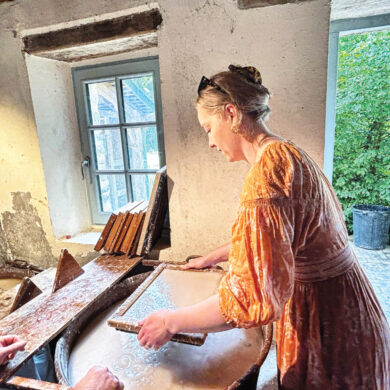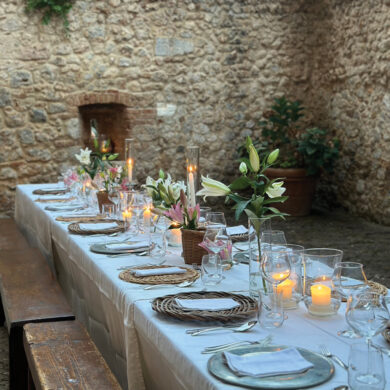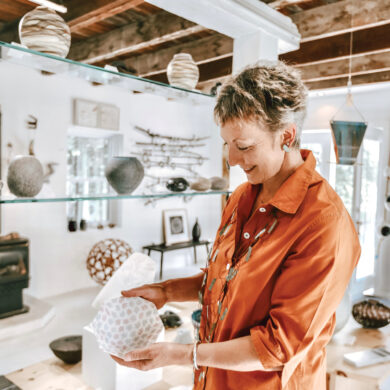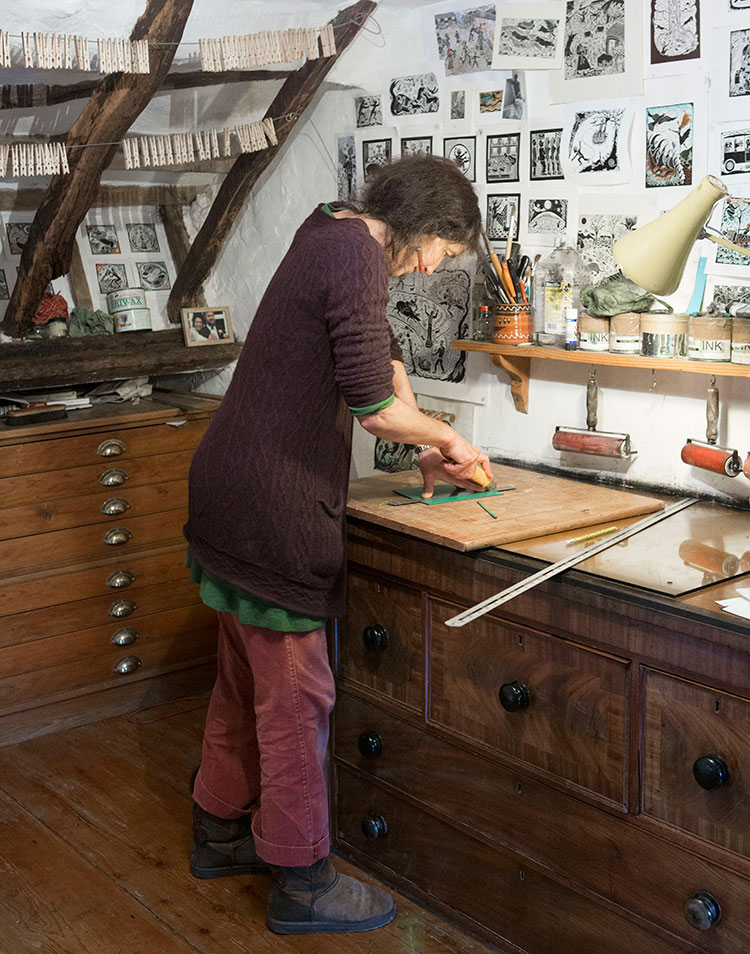
It would be easy to get lost on the way to my house as each lane leads to a smaller lane, twisting and turning over streams, up hills and across some of the most beautiful countryside on the north Devon coast. I restored my Devon farmhouse with one eye on its past, filling its rooms with family antiques and bespoke furniture made from reclaimed wood. This is all a part of its charm and no doubt the inspiration for the name ‘Overacross,’ given in the 1960s to this house that had already lived many lives. It used to be called ‘Carter’s Cottage,’ which probably gives a good idea as to who lived here when it was part of the big farm.
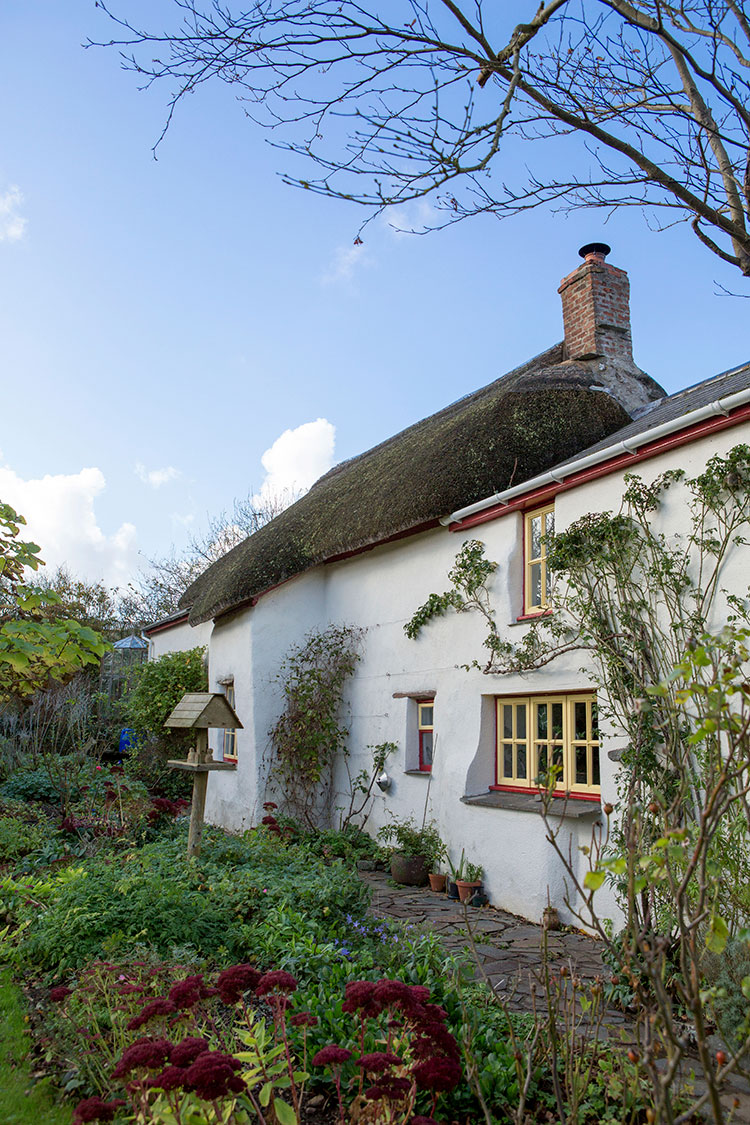
By the time I found the house in 1994, its days as a 40-acre farm were over. The house had been sold without the land and for many years was owned by an elderly lady. Following her death, family members used the house for holidays, but it was sorely in need of love. My mother hated the house at first, as she said it was like a rabbit warren of small rooms, but I loved it. All the levels were uneven, and everything seemed higgledy-piggledy in a really interesting way.
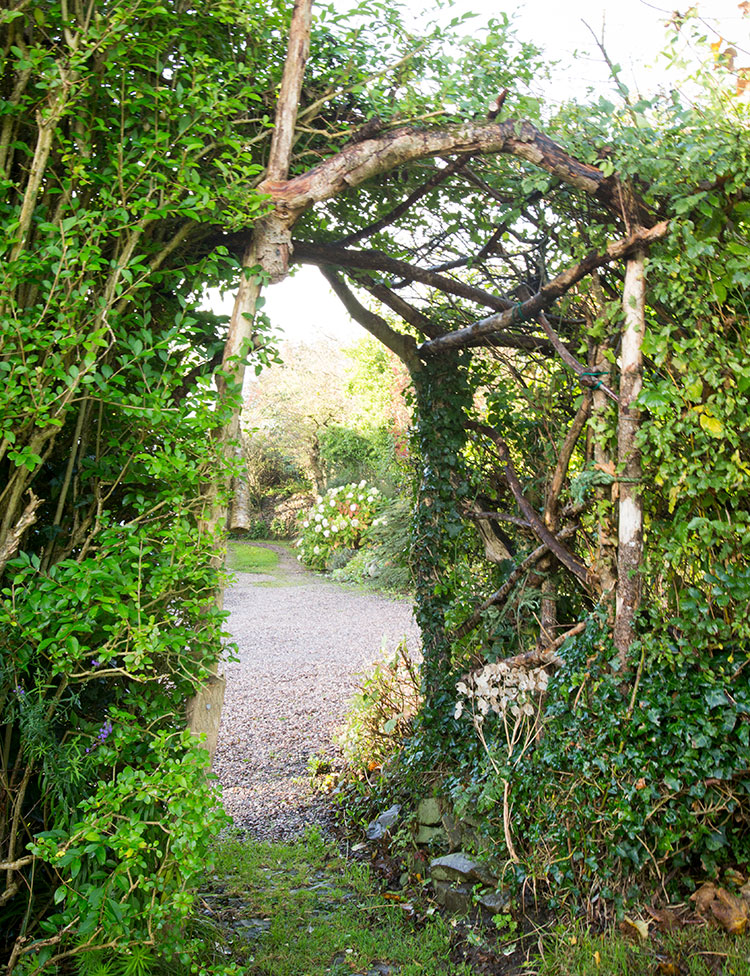
I needed a haven after my parent’s divorce, my own divorce and the sale of the family farm; somewhere I could walk every day and not feel hemmed in by life; a space to think and create. My new home also needed time to breath again. Although the house was just a ten minute walk from the cliffs, it had weathered many storms since it was built in the 1600s.
Any new additions to my house have been made locally, often by one of my group of creative friends. One such friend made all the internal doors from local elm. Each door cost me £28, which even in 1994 was a great price, and they are a thing of beauty. Every one is different because all the door frames are different sizes.
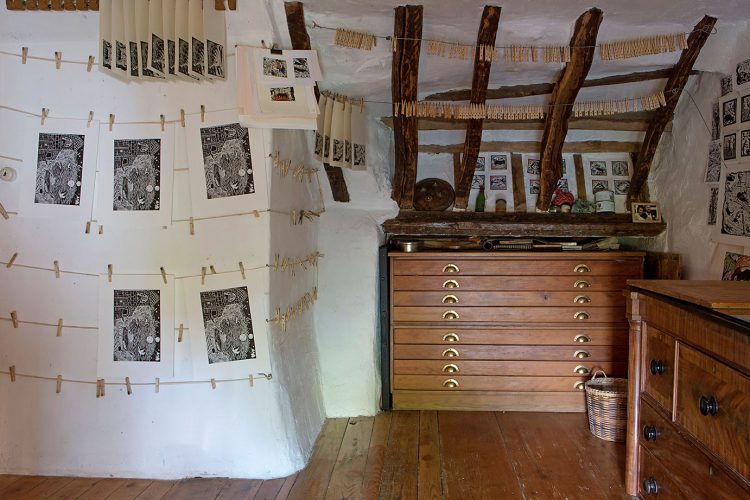
There was no grand plan apart from letting the bare bones of the house shine. There are so many beautiful features here, and I like to keep everything simple. I like colour, but I don’t like patterns, which is interesting because my work is quite intricate.
Since moving to Overacross, I have freed my inner artist. Before this, I was a sheep farmer, and I farmed 130 acres near Torrington, in Devon. At that point, my creativity was channelled into the knitted pieces I created using my own wool. I used my spinning wheel every day to spin wool with which I knitted clothes and bags. I even created my own dyes using nettles or onion skins, which give a rich yellow colour.
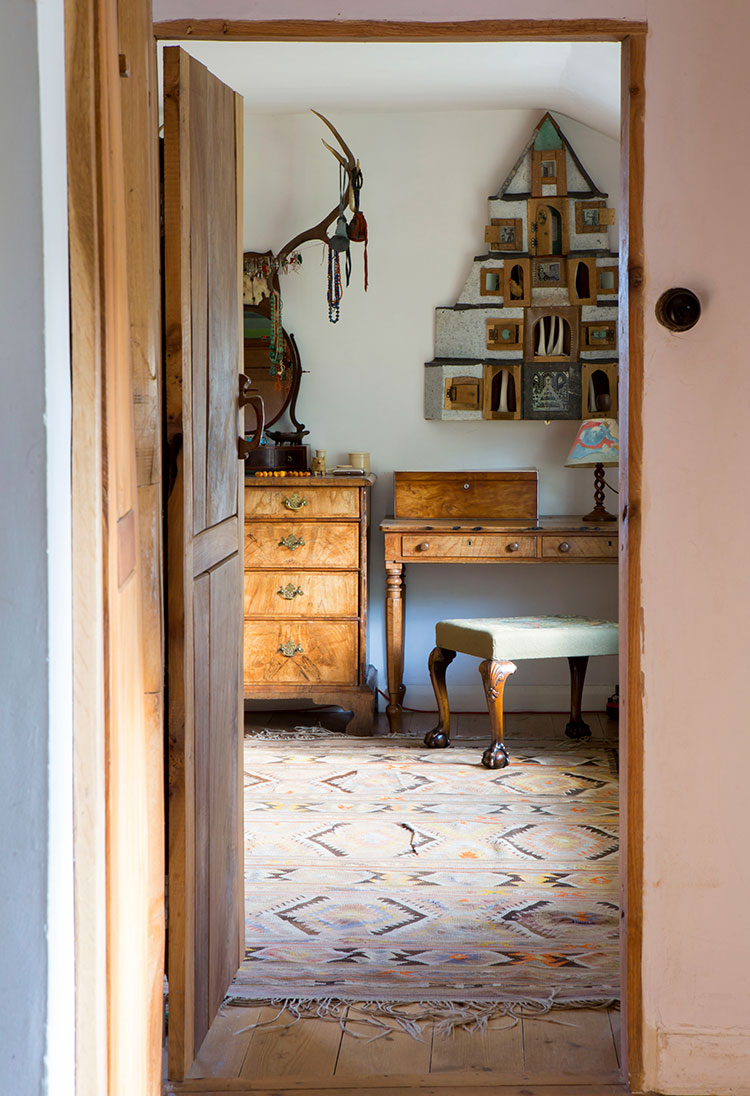
After an art foundation course, I embarked on a fine arts degree at Plymouth University’s Exeter campus. I soon found myself drawn to linocut, a printmaking technique that involves cutting a design into a block of linoleum. I studied part-time, to fit around raising my son Damien (who is now 33). After six years, I graduated and discovered a new medium in the process.
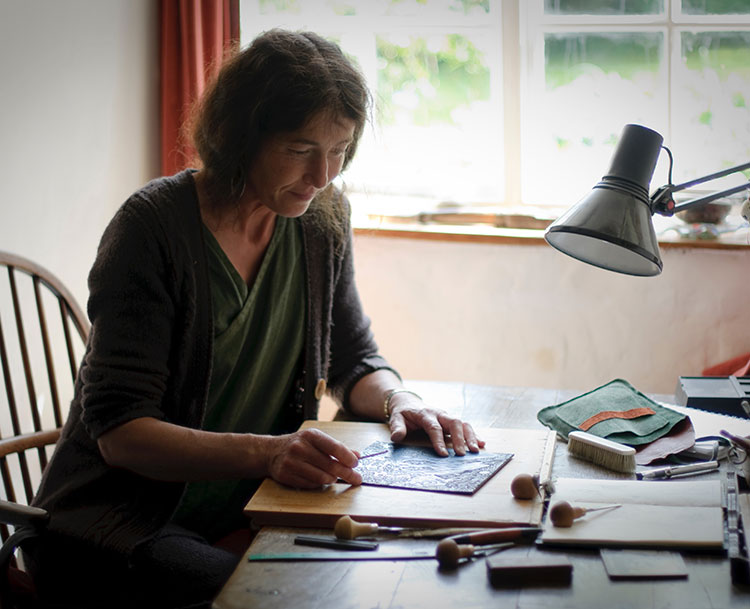
My degree show was to take place in June 2003, but my dad died in March and my brother died in April. Suddenly, I found I had very little time left to prepare for my show. I took a print of a skyscraper into my garden workshop. I started building using reclaimed wood, copper piping and driftwood—and I just kept building. The finished piece titled, “The City,” was 8 feet 4 inches, and the University was so impressed, they bought it.
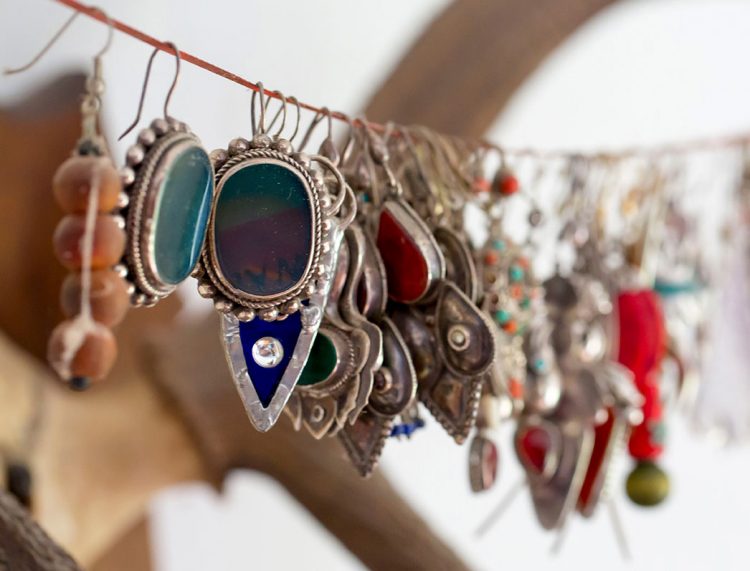
Now, I create 3D dream-like worlds when not working on my dream-like linocut prints, which I sell through Etsy and the Appledore Crafts Company. My friends know I collect oddities, so I get lots of bits and bobs donated including such things as copper water cylinders, pipes and driftwood.
Apart from glue and screws, I never use anything new in my 3D pieces; new pieces just don’t look or feel the same.
The same ethos fuels the way I have decorated my home. There is nothing obviously new in my house. I am very lucky to have inherited lots of furniture from my grandparents, like the Persian rugs downstairs and my kitchen table and chairs, which I remember sitting in as a child. I find it comforting to be surrounded by old things. I believe that furniture absorbs memories and has a totally different feel when it has been well-used and well-loved.
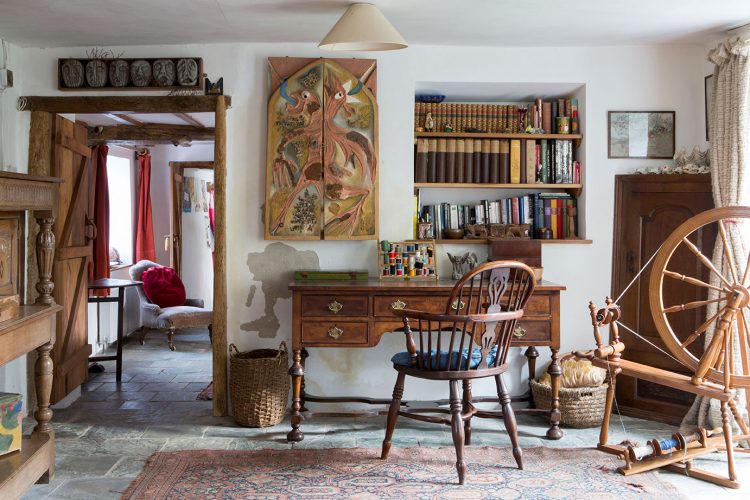
Now a grandmother myself (my daughter Freya, 40, has two children), I relish another generation enjoying my home and garden. The ¾-acre garden, bordered by fruit trees and fields, produces much of the food I eat. Deep underneath it lies the borehole that provides all of my water. I can’t drink main’s water anymore because to me it tastes like swimming pools; the borehole water tastes wonderful. Whenever I visit my mother, who has a main’s supply, I take her gallons of my water.
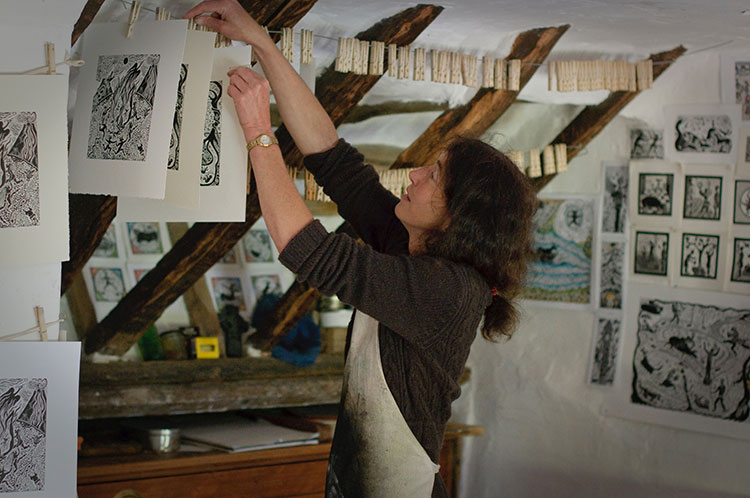
Although I am connected to main’s electricity, spending time at Overacross feels like stepping out of the world and into a gentler world, where creativity reigns. My daily walks, over and across the fields, often take me to the cliffs above Speke’s Mill Mouth, where a waterfall that cannot be described as anything less than spectacular drops to a long beach popular with surfers.
It is a perfect place in which to get a little bit lost and then to find yourself.
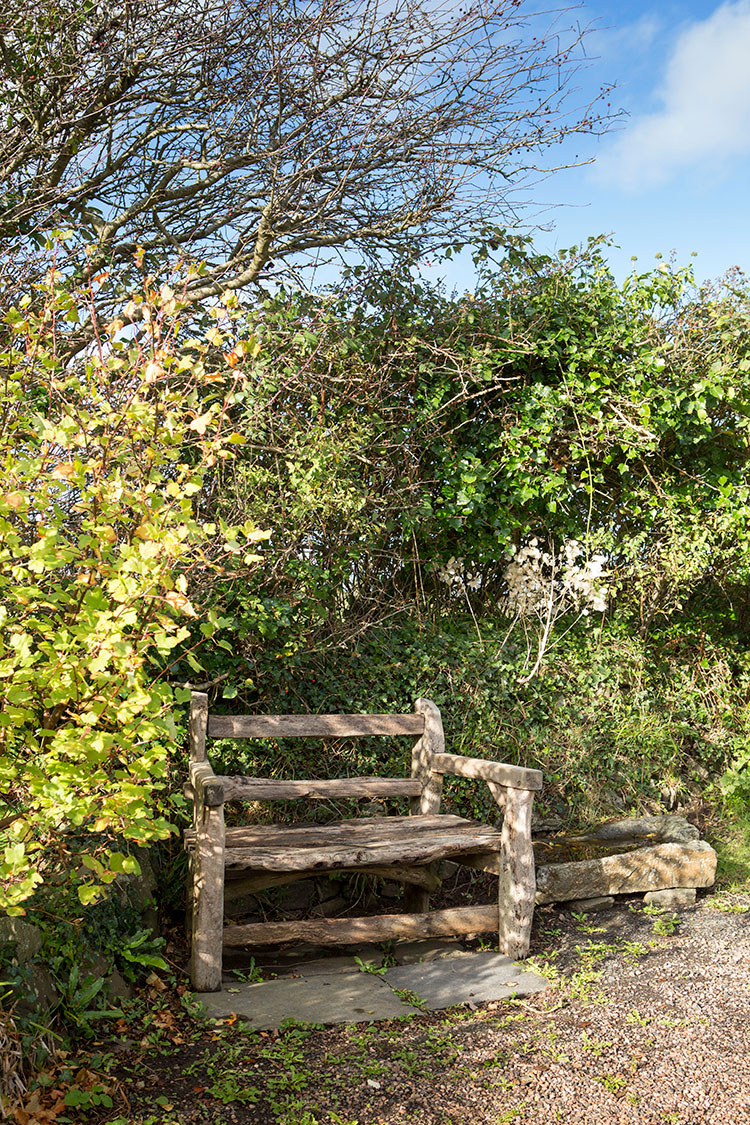

It would be easy to get lost on the way to my house as each lane leads to a smaller lane, twisting and turning over streams, up hills and across some of the most beautiful countryside on the north Devon coast. I restored my Devon farmhouse with one eye on its past, filling its rooms with family antiques and bespoke furniture made from reclaimed wood. This is all a part of its charm and no doubt the inspiration for the name ‘Overacross,’ given in the 1960s to this house that had already lived many lives. It used to be called ‘Carter’s Cottage,’ which probably gives a good idea as to who lived here when it was part of the big farm.

By the time I found the house in 1994, its days as a 40-acre farm were over. The house had been sold without the land and for many years was owned by an elderly lady. Following her death, family members used the house for holidays, but it was sorely in need of love. My mother hated the house at first, as she said it was like a rabbit warren of small rooms, but I loved it. All the levels were uneven, and everything seemed higgledy-piggledy in a really interesting way.

I needed a haven after my parent’s divorce, my own divorce and the sale of the family farm; somewhere I could walk every day and not feel hemmed in by life; a space to think and create. My new home also needed time to breath again. Although the house was just a ten minute walk from the cliffs, it had weathered many storms since it was built in the 1600s.
Any new additions to my house have been made locally, often by one of my group of creative friends. One such friend made all the internal doors from local elm. Each door cost me £28, which even in 1994 was a great price, and they are a thing of beauty. Every one is different because all the door frames are different sizes.

There was no grand plan apart from letting the bare bones of the house shine. There are so many beautiful features here, and I like to keep everything simple. I like colour, but I don’t like patterns, which is interesting because my work is quite intricate.
Since moving to Overacross, I have freed my inner artist. Before this, I was a sheep farmer, and I farmed 130 acres near Torrington, in Devon. At that point, my creativity was channelled into the knitted pieces I created using my own wool. I used my spinning wheel every day to spin wool with which I knitted clothes and bags. I even created my own dyes using nettles or onion skins, which give a rich yellow colour.

After an art foundation course, I embarked on a fine arts degree at Plymouth University’s Exeter campus. I soon found myself drawn to linocut, a printmaking technique that involves cutting a design into a block of linoleum. I studied part-time, to fit around raising my son Damien (who is now 33). After six years, I graduated and discovered a new medium in the process.

My degree show was to take place in June 2003, but my dad died in March and my brother died in April. Suddenly, I found I had very little time left to prepare for my show. I took a print of a skyscraper into my garden workshop. I started building using reclaimed wood, copper piping and driftwood—and I just kept building. The finished piece titled, “The City,” was 8 feet 4 inches, and the University was so impressed, they bought it.

Now, I create 3D dream-like worlds when not working on my dream-like linocut prints, which I sell through Etsy and the Appledore Crafts Company. My friends know I collect oddities, so I get lots of bits and bobs donated including such things as copper water cylinders, pipes and driftwood.
Apart from glue and screws, I never use anything new in my 3D pieces; new pieces just don’t look or feel the same.
The same ethos fuels the way I have decorated my home. There is nothing obviously new in my house. I am very lucky to have inherited lots of furniture from my grandparents, like the Persian rugs downstairs and my kitchen table and chairs, which I remember sitting in as a child. I find it comforting to be surrounded by old things. I believe that furniture absorbs memories and has a totally different feel when it has been well-used and well-loved.

Now a grandmother myself (my daughter Freya, 40, has two children), I relish another generation enjoying my home and garden. The ¾-acre garden, bordered by fruit trees and fields, produces much of the food I eat. Deep underneath it lies the borehole that provides all of my water. I can’t drink main’s water anymore because to me it tastes like swimming pools; the borehole water tastes wonderful. Whenever I visit my mother, who has a main’s supply, I take her gallons of my water.

Although I am connected to main’s electricity, spending time at Overacross feels like stepping out of the world and into a gentler world, where creativity reigns. My daily walks, over and across the fields, often take me to the cliffs above Speke’s Mill Mouth, where a waterfall that cannot be described as anything less than spectacular drops to a long beach popular with surfers.
It is a perfect place in which to get a little bit lost and then to find yourself.












